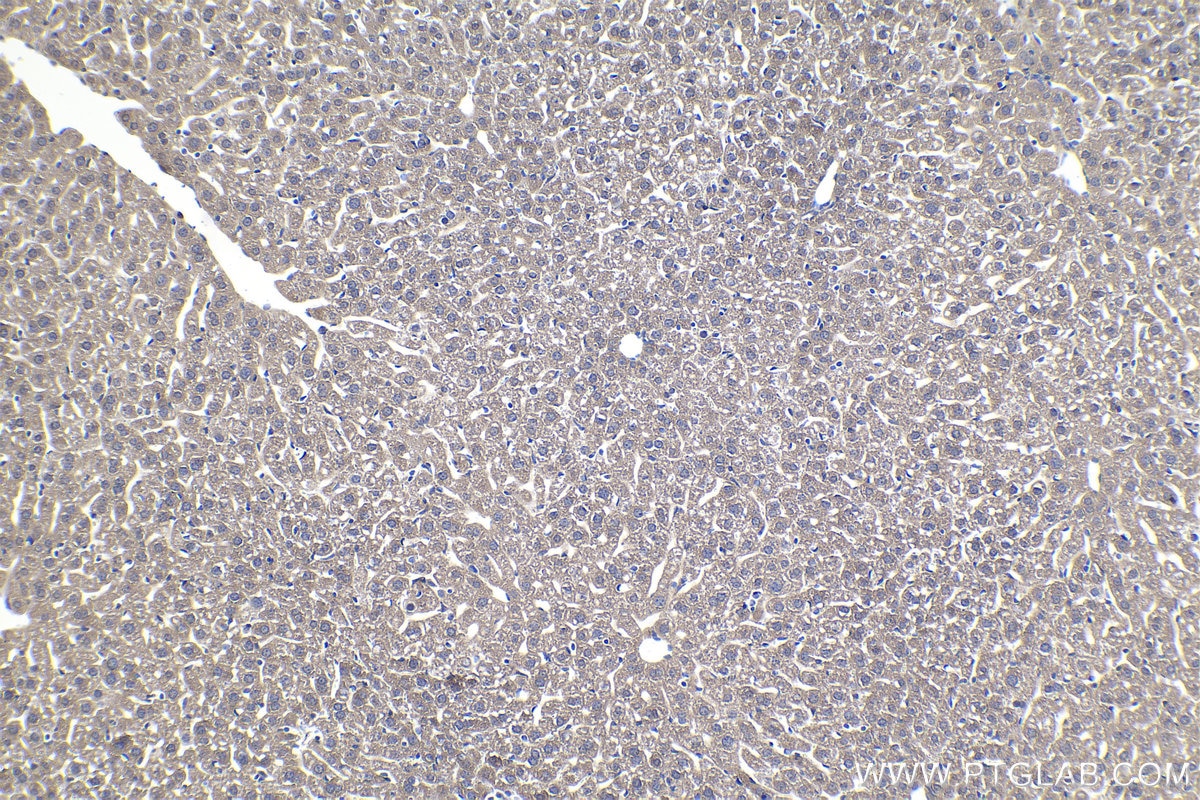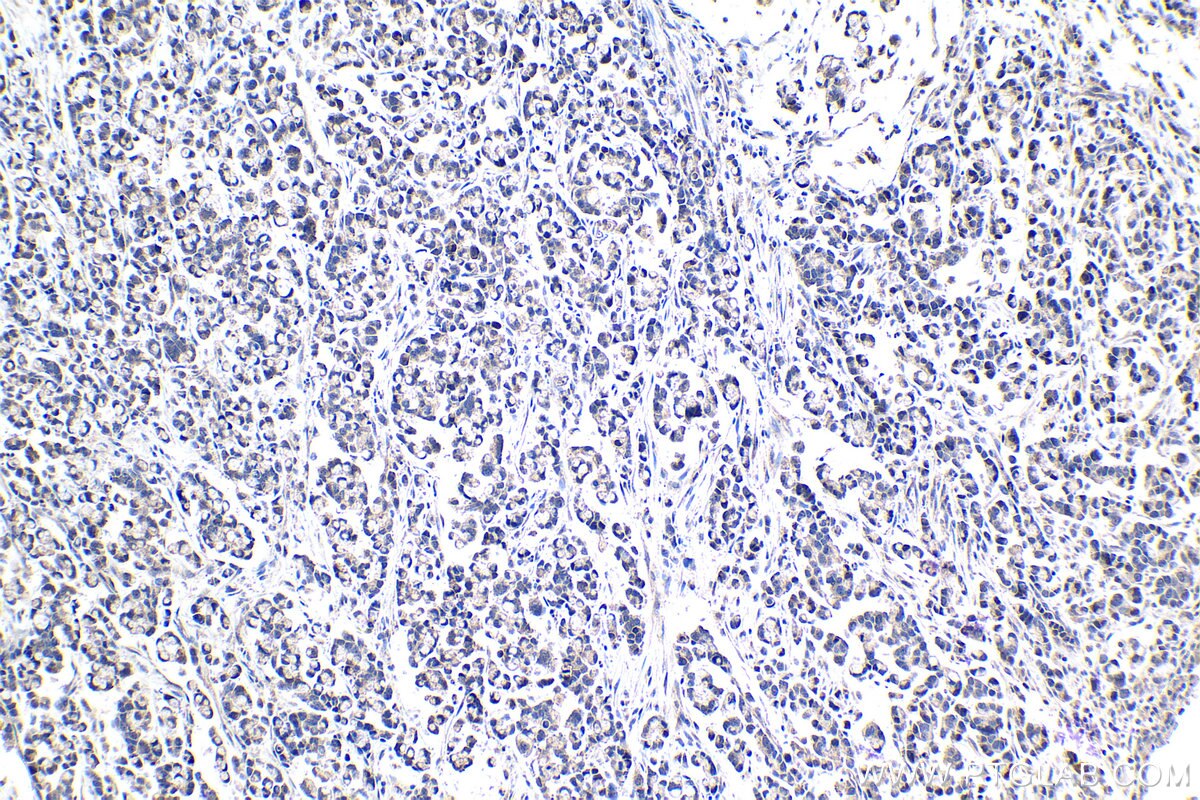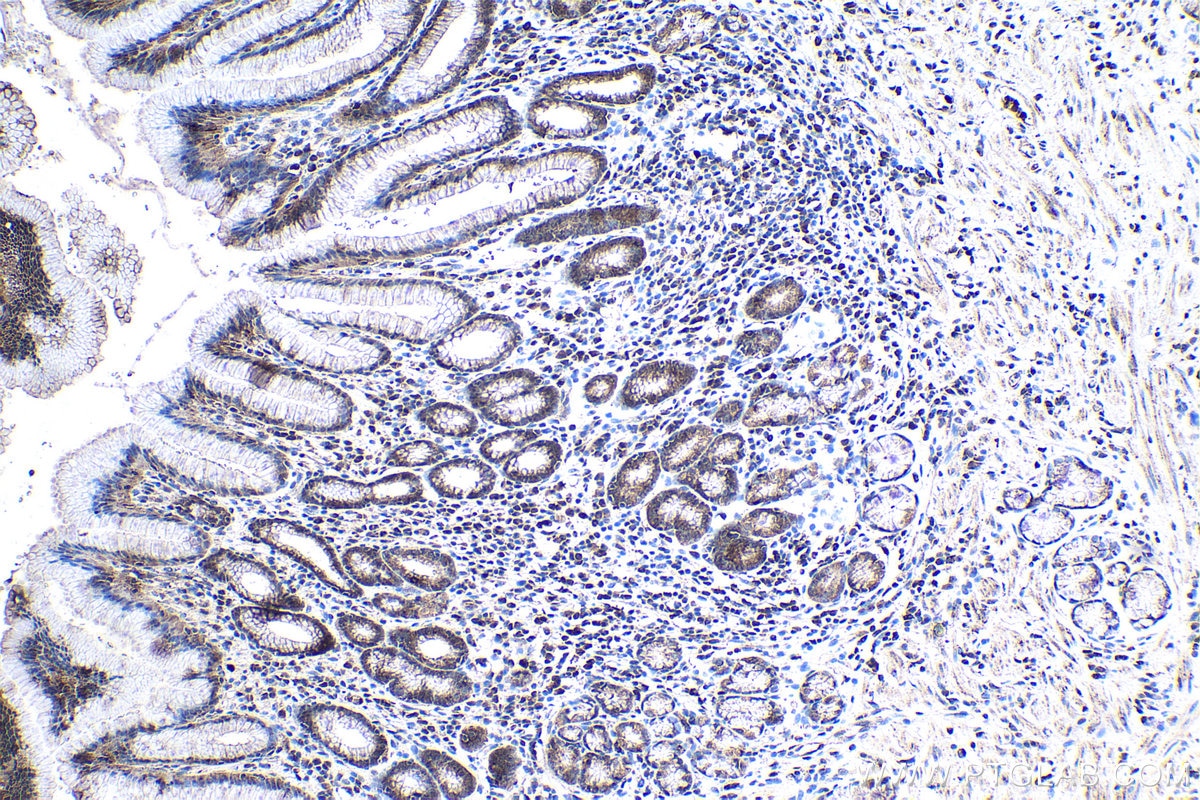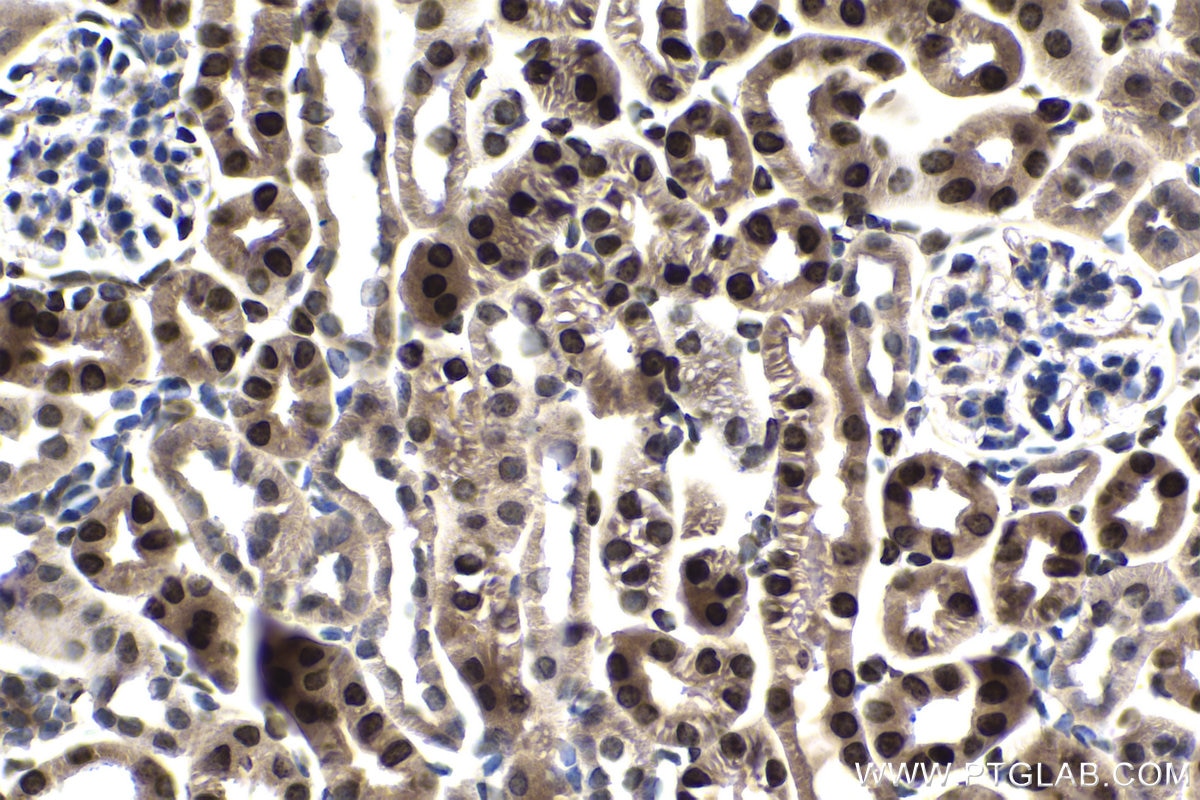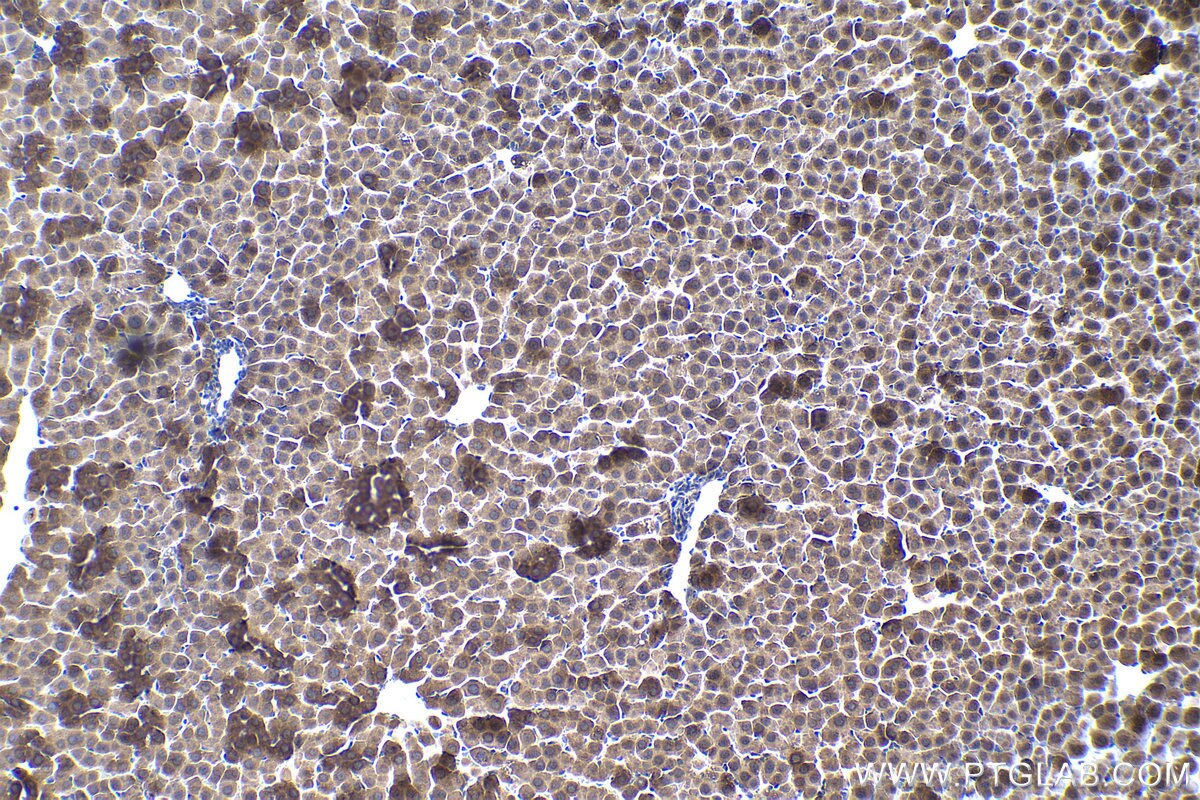ELP2 Polyklonaler Antikörper
ELP2 Polyklonal Antikörper für IHC, ELISA
Wirt / Isotyp
Kaninchen / IgG
Getestete Reaktivität
human, Maus, Ratte
Anwendung
IHC, ELISA
Konjugation
Unkonjugiert
Kat-Nr. : 13793-1-AP
Synonyme
Geprüfte Anwendungen
| Erfolgreiche Detektion in IHC | humanes Magenkrebsgewebe, humanes Kolonkarzinomgewebe, Mausnierengewebe, Mauslebergewebe, Rattennierengewebe, Rattenlebergewebe Hinweis: Antigendemaskierung mit TE-Puffer pH 9,0 empfohlen. (*) Wahlweise kann die Antigendemaskierung auch mit Citratpuffer pH 6,0 erfolgen. |
Empfohlene Verdünnung
| Anwendung | Verdünnung |
|---|---|
| Immunhistochemie (IHC) | IHC : 1:250-1:1000 |
| It is recommended that this reagent should be titrated in each testing system to obtain optimal results. | |
| Sample-dependent, check data in validation data gallery | |
Produktinformation
13793-1-AP bindet in IHC, ELISA ELP2 und zeigt Reaktivität mit human, Maus, Ratten
| Getestete Reaktivität | human, Maus, Ratte |
| Wirt / Isotyp | Kaninchen / IgG |
| Klonalität | Polyklonal |
| Typ | Antikörper |
| Immunogen | ELP2 fusion protein Ag4581 |
| Vollständiger Name | elongation protein 2 homolog (S. cerevisiae) |
| Berechnetes Molekulargewicht | 826 aa, 93 kDa |
| GenBank-Zugangsnummer | BC032553 |
| Gene symbol | ELP2 |
| Gene ID (NCBI) | 55250 |
| Konjugation | Unkonjugiert |
| Form | Liquid |
| Reinigungsmethode | Antigen-Affinitätsreinigung |
| Lagerungspuffer | PBS with 0.02% sodium azide and 50% glycerol |
| Lagerungsbedingungen | Bei -20°C lagern. Nach dem Versand ein Jahr lang stabil Aliquotieren ist bei -20oC Lagerung nicht notwendig. 20ul Größen enthalten 0,1% BSA. |
Hintergrundinformationen
ELP2 is a component of the elongator complex which is required for multiple tRNA modifications. The elongator complex catalyzes the formation of carboxymethyluridine in the wobble base at position 34 in tRNAs.
Protokolle
| PRODUKTSPEZIFISCHE PROTOKOLLE | |
|---|---|
| IHC protocol for ELP2 antibody 13793-1-AP | Protokoll herunterladenl |
| STANDARD-PROTOKOLLE | |
|---|---|
| Klicken Sie hier, um unsere Standardprotokolle anzuzeigen |
